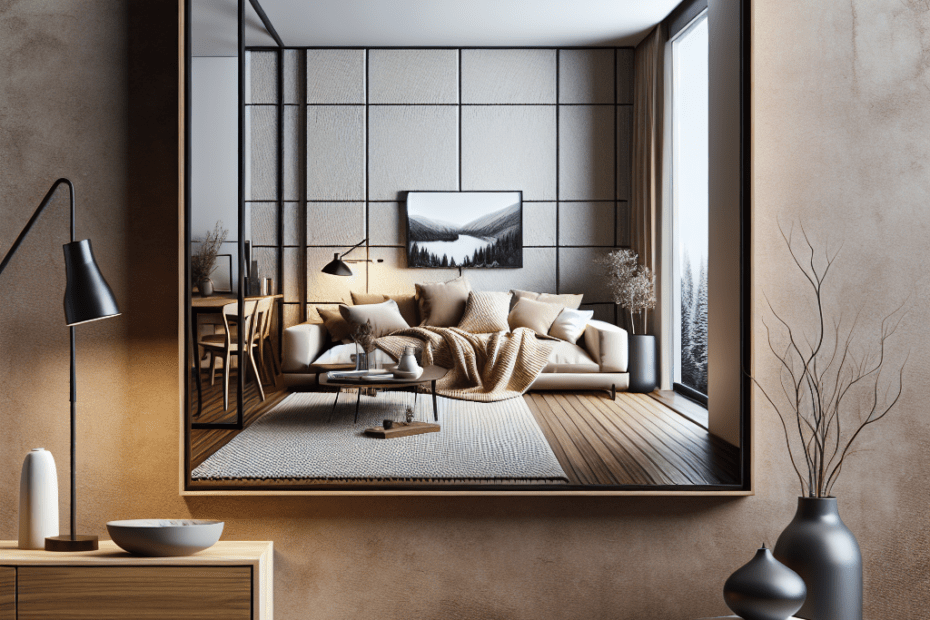The Essentials of Textured Walls in Modern Homes
In the dynamic world of interior design, they are constantly exploring new ways to reinvent and enliven spaces. One compelling trend that has gained traction is the use of textured walls in modern design. Offering more than just visual appeal, textured walls introduce a tactile element that engenders warmth, sophistication, and character within a home.
Why Choose Textured Walls?
Modern homeowners often seek spaces that reflect personal style while providing comfort and functionality. Incorporating textured walls can achieve this balance by adding depth and interest to otherwise flat surfaces. This technique transforms walls into features that capture the eye and enrich the overall ambiance of a room.
Types of Textured Wall Designs
There exists a variety of textures that can be applied to walls, each contributing a unique feel and aesthetic to the space. Here’s a look at some popular textured wall options:
| Type of Texture | Characteristics |
|---|---|
| Plaster | Provides a smooth to rough finish, adding historical and classic vibes. |
| Stone | Imparts a natural, earthy touch suitable for rustic and contemporary designs. |
| Brick | Offers an industrial and urban feel, both traditional and modern. |
| Wood Paneling | Adds warmth and a natural element, enhancing cozy atmospheres. |
| Wallpaper | Presents diverse patterns and textures, adaptable for various themes. |
The Benefits of Textured Walls
Embracing textured walls in modern homes provides several advantages. According to a report by Allied Market Research, the global wall covering market is projected to reach $40.79 billion by 2027, with innovative materials like sonic and acoustic textiles elevating the demand for textured aspects in interiors (“Global Wall Covering Market Report – Allied Market Research, 2020”). Here are some benefits they may enjoy:
- Diversified Aesthetic: Textures add layers of complexity, making spaces feel lived-in and more inviting.
- Enhanced Acoustics: Certain textures can absorb sound and reduce echoes, creating a more serene environment.
- Masking Imperfections: They can effectively disguise surface flaws, reducing the need for extensive wall repairs.
- Increased Home Value: Unique design elements often enhance the perceived value of a property.
Considerations When Applying Textured Walls
While textured walls offer numerous advantages, there are some considerations they must keep in mind when integrating these elements into their homes:
- Lighting: It’s crucial to ensure adequate lighting to highlight the texture properly and avoid shadow exaggerations.
- Maintenance: Some textures may collect dust or be prone to damage, requiring regular care and cleaning.
- Balance: Too many textures can overwhelm a space; striking the right balance is key to a cohesive design.
Creating Textured Walls
Those considering textured walls can explore several techniques. DIY enthusiasts often use sponges or brushes to create subtle plaster textures, while professionals might employ advanced techniques like stenciling or engraving. With paint additives, they can also simulate effects such as sand or linen, broadening the spectrum of possibilities.
Conclusion
As they continue to push the boundaries of interior design, textured walls remain a versatile and impactful choice, adding dimension and personality to modern homes. By understanding the various types of textures and their applications, they can craft spaces that resonate with comfort and sophistication while standing the test of time.
Key Takeaways:
- Textured walls create depth and character in living spaces.
- A variety of textures—from plaster to wallpaper—cater to different styles and needs.
- The global wall covering market continues to grow, adding value to textured designs.
- Proper lighting and maintenance are essential when implementing textured walls.
Frequently Asked Questions (FAQ)
- What are textured walls?
Textured walls incorporate tactile patterns and materials to give walls an extra dimension and visual interest.
- Are textured walls suitable for all room types?
Yes, they can be customized for different rooms, but attention to lighting and space can enhance their impact.
- How do textured walls affect room acoustics?
Certain textures can improve sound absorption, reducing noise and echoes within a room.
- Can textured walls increase home value?
Unique and well-done textured walls can enhance a home’s aesthetic and marketability, potentially increasing value.
- What should they consider before applying textured walls?
They should consider factors like lighting, maintenance, and the balance of textures before proceeding.
